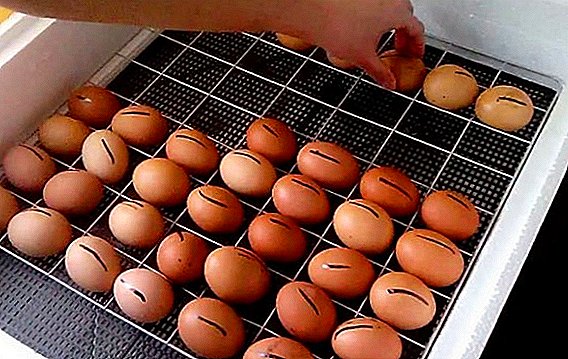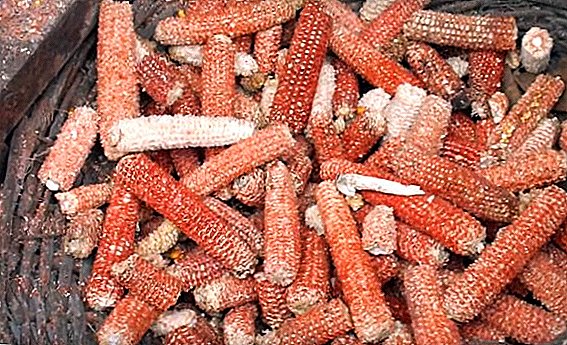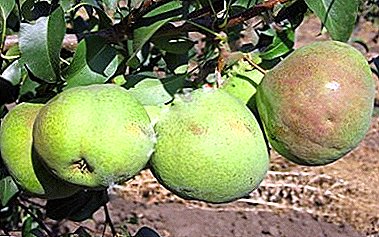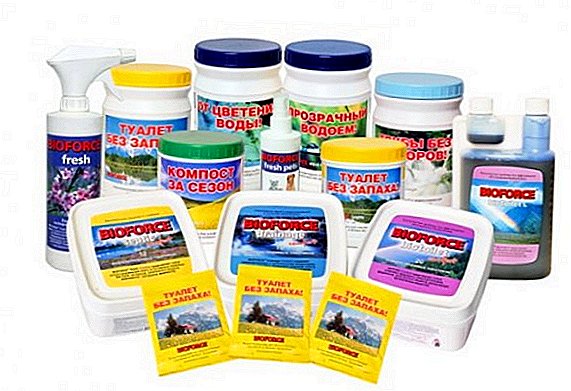 Many people are faced with the problem of cleaning cesspools in suburban areas. If there is no central sewage system in the village, then you have to equip your own: put a septic tank or just dig a hole. In any case, each type of cesspools requires regular cleaning. We will discuss the methods and techniques for cleaning cesspools in this article.
Many people are faced with the problem of cleaning cesspools in suburban areas. If there is no central sewage system in the village, then you have to equip your own: put a septic tank or just dig a hole. In any case, each type of cesspools requires regular cleaning. We will discuss the methods and techniques for cleaning cesspools in this article.
Mechanical method of cleaning cesspools
Mechanical sewage cleaning method involves the use of a special fecal pump or aspensor equipment. In the overwhelming majority of cases, residents of suburban settlements use the services of companies that are designed to clean the cesspools mechanically. A person calls an ad, calls an asseny machine to his home, and then the specialist does everything: throws the hose into the sewer, cleans and transports the pumped waste to the dump site. Typically, this procedure does not take much time (from 20 to 50 minutes), it all depends on the volume of sewage and the degree of contamination.

Using this method of cleaning cesspools, one important rule should be observed: carry out pumping only after the end of the floods, otherwise there is a risk of sewage filling up again with groundwater. I would also like to add that you can carry out mechanical cleaning yourself, but for this you should purchase a special fecal pump of a compact structure. The main structures of such a pump are a float and a chopper.
Did you know? For the first time the method of sewage treatment with the help of active sludge and aeration was proposed by the Englishmen V. Lokett and E. Arden in 1914.
These elements allow pumping out even too thick fecal waste. (the chopper makes the feces liquid, then the float floats up and the pump starts; but until the float comes up, the pumping operation will be suspended, only the chopper works). It should be noted that the fecal pump performs all the work automatically, the person only needs to connect it and bring it to the tank for pumping.

The mechanical method of cleaning cesspools has its positive and negative sides. Among the advantages I would like to mention these:
- The simplicity of the method. Just call the ad and pay the money, the specialist will do everything himself.
- On average, in 20-30 minutes, the average cesspool will be cleaned, so this method can be considered quite fast according to the degree of completion.
- Buying yourself a fecal pump, you will save a lot of money on regular cleaning of the drain.
We recommend that you familiarize yourself with the rules for choosing a fecal pump.
The disadvantages include the following points:
- It is not always possible to clean the cesspool mechanically. It so happens that the hose of the aspenzator machine simply does not physically reach the sewer hatch (if the drain is far in the yard where the truck cannot reach).
- Low efficiency of the method. After each cleaning, a significant amount of residual precipitation remains.
- In some cases, too dense and thick masses deflate is simply impossible. We have to add water to the sewage system, mix everything up and make a more liquid consistency. And all this pulls the cost of money and time.

The use of biologics
In addition to mechanical methods for cleaning cesspools, bioactive preparations can be used, which allow to convert human waste into high-quality fertilizer. In addition, the use of biologics will minimize unpleasant odors.
Read also how to choose a bio-toilet, as well as what are the advantages of using a peat bio-toilet
Anaerobic bacteria
Anaerobic Bacterial Microorganisms can be used for the purification of waste pits in the absence of a constant supply of oxygen. Anaerobic organisms receive energy and perform their functions by substrate phosphorylation. It is reasonable to use such bacteria in closed-type septic tanks or isolated sewer burials.
Aerobic bacteria
These microorganisms are able to most effectively clean up drains. and divide them into 2 layers. But aerobes continue their life cycle only with a constant supply of oxygen masses. It is advisable to use aerobic bacteria for open cesspools or for septic tanks with an integrated oxygen supply system.

Let's see when it is best to use aerobic and anaerobic microorganisms for wastewater treatment. Experts say that bacteria-based products are advisable to use in the summer, because at negative temperatures, living organisms stop performing their life cycle. In addition, biological products are perfect for those people who have a cesspool is inaccessible for assenizatorskoy place. Another important nuance: Bacteria process feces into good fertilizer, which will be an effective assistant for any summer resident and gardener.
Important! It is forbidden to throw in the sewer debris, pieces of plastic and plastic films. Such substances do not decompose, and during mechanical cleaning, they can clog the hose of ashenizator equipment.
Biopreparations release forms
There are 3 main types of biopreparations for wastewater treatment: preformed, powdered and liquid. In each of the forms of such biologics, there is a multimillion army of bacteria and special enzymes that are designed to process waste products of human life.

Powdered Biologics found on the shelves of shops in special bags, where bacterial microorganisms are in a state of hibernation. They can be activated only when the powder is diluted with water (diluted according to the instructions specified by the manufacturer). Bacteria for such preparations are grown in their natural environment and are safe for humans (the latter fact is not scientifically confirmed, therefore with such preparations one should be careful and follow all safety and personal hygiene measures).
Gardeners and gardeners prefer to fertilize their plots with organic fertilizers - manure: horse, pig, sheep, rabbit, cow, and faeces
Biological preparations in liquid form contain bacteria immediately in an active state. After the introduction of such a means into the sewage system, microorganisms begin to actively process feces into carbon and water. It should be noted that even a liter capacity of a biological product is enough to process 2 tones of waste.

Preparations in tablet form are the most convenient to use.. It is only necessary to observe the proportions and throw the right amount of pills into the drain, and the bacteria will do the rest. In addition to tablets, you can also find biologics in the form of cassettes or in soluble sachets on store shelves. But in whatever form you acquire a biological product, its composition and mechanism of action will be standard.
Did you know? The first in the history of sewage were built in the VI century BC. er in ancient Rome.
It should be noted that the cleaning of cesspools using aerobic and anaerobic bacteria has its advantages and disadvantages. Advantages of this method:
- Environmentally friendly method. Allows to recycle waste for fertilizers that benefit the environment.
- The drugs are sold in any plumbing store, so there will be no problems with the purchase.
- Bacteria are able to remove unpleasant odor. In addition, they recycle the waste silently, in contrast to the assenizer machine.
- Preparations are suitable for cesspools of all shapes, designs and sizes. It is only necessary to take into account the proportions when using.

Among the shortcomings should be noted:
- In regions where temperatures are negative in winter, biological products are not used.
- Not all drugs are equally effective for effluent. Sometimes you should try different types of biologics to achieve the desired effect.
- The cost of a bag of bacteria is relatively high.
Chemicals
Chemical preparations for cleaning cesspools show high efficiency even in the toughest environment. But at the same time, the product of their processing is environmentally unsafe: it should not be poured into beds, under trees or into a river.
Ammonium compounds
Pros:

- dilute thick fecal masses;
- eliminate the stench;
- pathogenic and pathogenic microorganisms are killed.
Read also how to use ammonium sulfate as a fertilizer, as well as how they are fed grapes, garlic, apple trees, fruit trees and shrubs.
Minuses:
- ammonium compounds are harmful to the environment;
- cause rapid corrosion of metal waste pipes;
- ineffective if detergents are poured into the waste pit;
- moderately high price of a kilogram package (about $ 25).
Nitrate Oxidizers
Pros:

- minimal environmental damage to the oxidizer for the soil;
- the lower muddy sediment after the decomposition of fecal waste can be used as fertilizer;
- high efficiency at any ambient temperature;
- nitrate oxidizers work under the most aggressive conditions, even with detergents;
- perfectly remove deposits on the walls of cesspools.
- the price of nitrate oxidizers is quite high;
- such funds cause significant damage to metal sewer pipes;
- scientists have not yet studied the properties of the products of the processing of nitrate oxidizers; some assert their usefulness, the second declare futility and even danger.
Some experts allow the use of feces in its pure form, as a fertilizer for ornamental plants and hedges.
Formaldehyde
There are very few advantages to this tool: Formaldehyde is cheap, but it effectively recycles human waste. However, the disadvantages of this chemical compound are much greater:

- high toxicity;
- an environmentally hazardous compound that can kill not only the flora and fauna, but even a person (if only 10 g of the drug is ingested into the stomach, the case will end in death with a 90% probability);
Important! If you install a septic tank in your area, then remember the following points: the pit for the septic tank must be located 50 m from the drinking water source and 5 m from the road and the house.
- discontinued, therefore, virtually unavailable on the shelves;
- just a few sessions can significantly damage the sewer pipe.
Recommendations for the operation of cesspools
In order not to damage sewer pipes and surrounding soil, It is necessary to follow the recommendations on the use of sewage

- Regularly clean your sump mechanically. To reduce the volume of the mass, use biological products that are distinguished by a high degree of environmental safety.
- Do not allow sewage to be filled to the upper edges, as waste may enter the sewers and block them.
- Do not pour into the sewage detergents and drugs. They can destroy bacterial microflora.
- Do not pump out runoff during floods. Such action threatens to refill the sewage with groundwater.
- Do not throw toilet paper into the cesspool, as it will settle in a thick layer on the bottom and may clog the pipes of the waste collection machine during mechanical cleaning.
Now you know how to clean the cesspool. We recommend that you choose the most efficient and environmentally friendly method so as not to cause significant harm to the surrounding flora and fauna.












